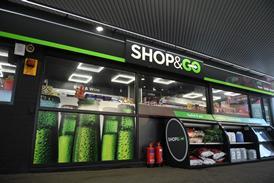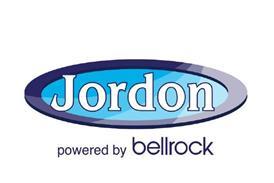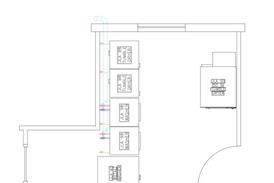If you’ve not heard of the Teksta T-rex, Zoomer Dino Boomer, My Friend Cayla or the Xeno interactive toy, you soon will, especially if you’ve got kids. That’s because these toys are Tesco’s tips for success this Christmas. And what they’ve all got in common apart from costing upwards of £60 each is the fact that they all need batteries and they’re not included in the box. Of course, you’re not expected to stock these items in your shops but you will be expected to stock the batteries that powers them particularly in that week leading up to Christmas when mums and dads are busy wrapping the presents when they realise they need loads of batteries too.
Most parents won’t want to spend all that money on a gift then put in cheap batteries that might leak and ruin it. Energizer reckons it has the answer to leakage concerns with its new ’No Leaks’ promise across its best-selling lines. This is in response to research that found three out of four consumers were left frustrated by leaking batteries.
The firm says its ’No Leaks. Guaranteed Or Your Money Back’ promise is a powerful message which communicates its superior in-device no-leakage performance technology which will give consumers peace of mind that their devices are protected.
Mandy Iswarienko, Energizer marketing director North West Europe, says "Our research shows that our ’No Leaks. Guaranteed’ promise will also be a driving force for new sales, with 69% of shoppers saying this message would be very appealing and 50% saying they would be more likely to purchase.
"Our patented no leaks technology means that we are able to make that claim, which is why we will be shouting about it properly for the first time, ensuring we are delivering on consumers’ desire to buy batteries that deliver on quality, reliability and responsibility."
She adds that with 32% of battery purchases made in the run-up to Christmas, it’s essential that retailers take advantage of the Energizer promise to help drive sales even further during this lucrative sales period."
The promise will initially be made across the Energizer primary range Energizer AA and AAA batteries which are the most popular battery formats and account for 76% of category sales (Nielsen data).
Energizer will be backing its promise with eye-catching in-store point-of-sale material, including disruptive merchandising and free-standing display units (FSDUs) in a variety of sizes to help retailers convert more shoppers to buy more batteries in-store.
Conversion is key
Converting shoppers is vitally important when it comes to batteries. That’s because according to Mintel, 52% of all battery purchases are prompted in store, meaning that shoppers need to be reminded that they need batteries. So they need to see them at the checkout or be asked by till staff if they need them.
Iswarienko says that tests in the Nordic markets saw 30-40% upifts in sales where batteries were displayed more prominently in stores. "If people see you’ve got them, they’ll buy them. They need to be up high, by the till, or on clip strips," she explains.
Energizer can help by offering FSDUs, clip strips and counter trays that can be displayed in high traffic areas. But many forecourt retailers keep their batteries behind the till because they are worried that if they are out on display on the shopfloor, they will be a target for thieves.
However, EIswarienko says that in tests it was found that theft was not an issue on batteries.
"But for retailers with concerns, we can offer more secure point-of-sale and we can help retailers ensure their batteries are visible even when they’re behind the till."
Performance matters
Meanwhile, for Duracell, the key message to consumers continues to be performance, and its performance has just been improved thanks to upgrades to its alkaline, rechargeables and speciality ranges. Brand owner P&G says the upgrades mean the brand offers the best performing batteries across all segments of the market.
The Duracell Plus range, for example, has been improved to bring it in line with the existing performance of Duracell Ultra, which was upgraded last year. More active ingredients including more cathode material, more zinc anode and a new anode super-absorber have been packed into the core of Duracell Plus batteries to produce even greater power. Duracell is now also rolling out its best-performing rechargeables range ever, while its C and D batteries benefit from a 30% boost in longevity and Duracell hearing aid batteries have been improved with a new formula.
To support the improvements, new-look packaging includes a simplified colour scheme, as well as greater on-pack presence for the iconic Duracell bunny.
The improved power claims are highlighted more clearly and the brand’s familiar copper and black colours are better differentiated for stronger on-shelf stand out. The upgrades are backed by a media campaign, focusing on the brand’s long-lasting claims, performance and superiority as well as its value.
On-pack claim
But snapping at Duracell’s heels is Varta with a ’Lasts as long as Duracell’ claim on its packs.
The internal chemistry of Varta batteries has been changed to give better performance, particularly in high-drain devices such as toys and computer accessories.
Anthony Sewart, sales director at Varta Consumer Batteries UK, explains: "Our product performance is market leading and we are the number one or two brand in most European countries, but we recognise that there are still some consumers here in the UK that have not yet heard of Varta.
"The ’Lasts as long as Duracell’ message really works at the point of sale, giving an assurance of quality and value when consumers are faced with the choice between expensive premium brands and perceived low-quality own-label products."
Portable power
Finally, with so many people reliant on their smartphone or tablet, portable power is a fast-growing sector.
Battery manufacturers are responding to this with new power solutions. Varta, for example, has extended its portable power range, with six new products that can help keep devices fully charged while their owners are on the go.
As a result, its range now includes ’Made for iPhone/iPad’ solutions that are guaranteed to work with Apple devices.
Sewart says: "This is a growing market. We are all hugely dependent on smartphones and tablets, not just for calls but also for emails, shopping, banking and even finding our way around. As our phones get ’smarter’, their battery life gets shorter and our research has told us that over one-third of consumers charge their phone more than once a day. Our portable power products are there for those occasions when you can’t access mains electric but still need to be connected."
Panasonic too is focusing on portable power with the launch of a three-strong range targeting occasional, frequent and heavy users. The products are supported by a consumer PR campaign aimed at students, business and frequent travellers.
Bright Ideas for those dark nights
Last year, according to GfK research, 3.5 million torches were sold in the UK. As a result, the market is worth £21.5m and growing by 12.5%.
Energizer is the number one brand in the torches market with an 11% market share. The firm’s marketing director for Energizer North West Europe, Mandy Iswarienko, says October to December is a key time for torches with 50% of value sales occurring in these months as nights get darker.
"Consumers are spending 16% more on torches this year than last. Average spend on a torch is £6.05, with 50% of the growth in torches coming in the £8-£12 price range."
Energizer research has found that the average household owns 2.5 torches, with 55% of consumers using theirs torches monthly or more often.
"Consumers keep separate torches for different uses," says Iswarienko. "Personal flashlights for indoor use are owned by 84% of the population. Work/DIY torches are owned by 39% of the population and kept in the house or garage. Outdoor torches (headlights, lanterns or flashlights) are owned by 33% of the population and are used for things like camping and biking. Finally, children’s torches are owned by 6% of the population and used for fun or to scare monsters away."
She recommends therefore that forecourt stores stock a variety of torches to cater for these needs.
"And remember, 11% of all torch sales happen in the weeks prior to Halloween and Bonfire Night as more people are out in the dark, while 45% of shoppers consider giving torches as a gift at Christmas time."
Retailer View
David Cox, Saintfield Road Service Station, Lisburn
"My latest sales report indicates that I probably sell around £2,500-worth of batteries a year. The margin is good (about 50%) so it’s an easy £1,250 profit for me. We keep our batteries behind the till but I suspect they would sell a lot better out in the shop. I also expect extra sales would cover any theft so that would be a worthwhile exercise to try.
"In the past, when shops closed at Christmas, we would get all the distress purchases but that’s not really the case now as nobody closes any more. But I still expect to sell a lot of batteries on Boxing Day.
"The one thing we need to watch is the fact that batteries are becoming a big seller in the Poundland-type stores. I have seen batteries for sale in those shops for much cheaper than our wholesalers sell them to us."
Batteries by numbers
The UK battery market is worth £225m.
The market breaks down as follows: 86% primary (disposable) cells; 6% rechargeables; and 8% hearing aid/specialist cells.
Within primary cells, alkaline and zinc account for 27% of the market; premium cells account for 45%; performance cells 27%; and lithium 1%.
Size wise, in the primary market, AAs account for 54% of the market, worth £105m; AAAs account for 22%, worth £42m; 9V account for 12% (£23m); Cs 7% (£13m); and Ds 5% (£10m).
63% of households buy batteries 2.8 times a year. On each trip they buy 1.5 packs (just over eight batteries) and pay £3.02 per pack. That works out to 54p a cell. They spend £11.78 a year on 3.9 packs.
A typical home has 17 different battery operated devices that figure rises to 27 if a household includes children.
Source: Nielsen

















No comments yet